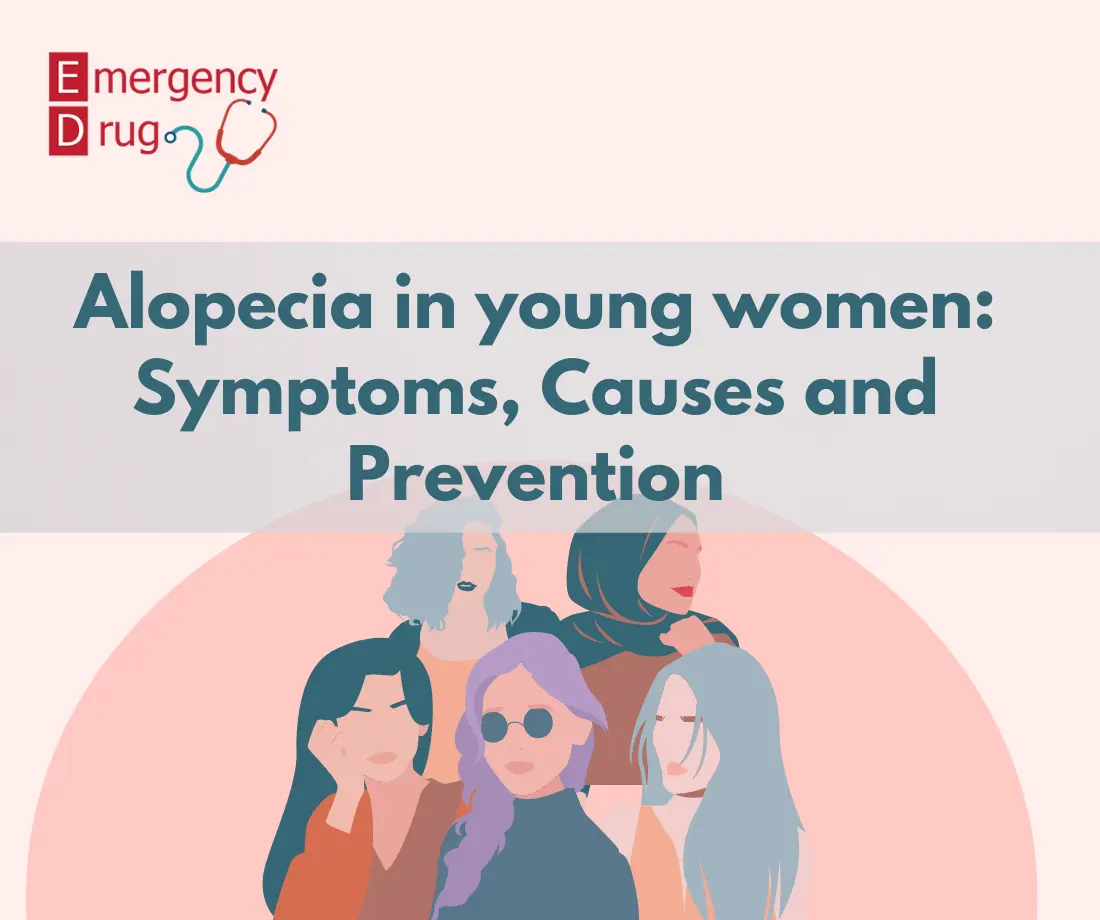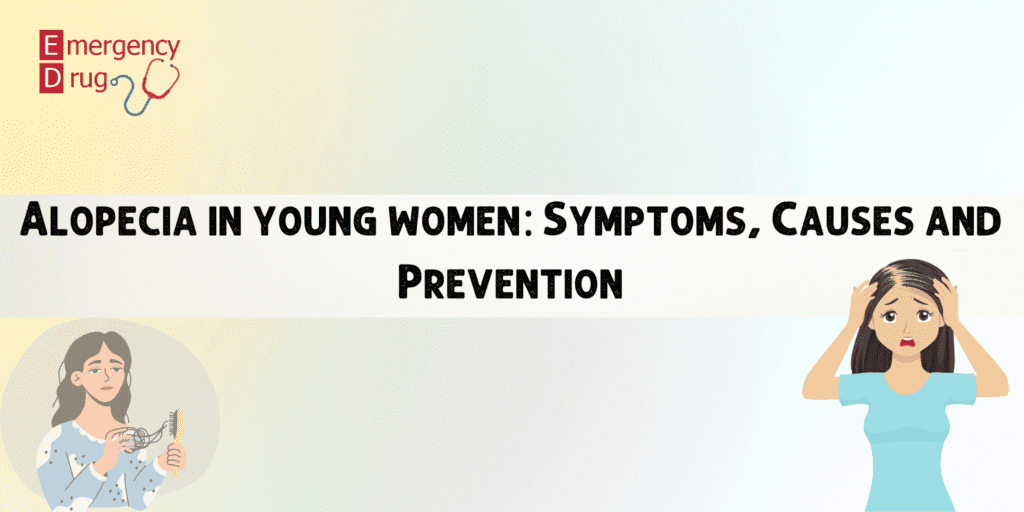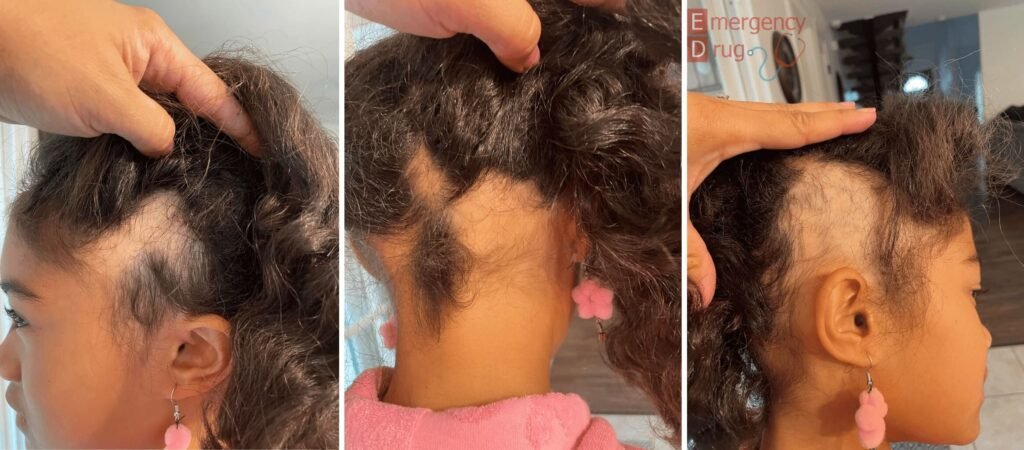Alopecia in Young Women: Symptoms, Causes and Prevention
Hasan
17 Mar, 2025


Alopecia can be broken down into two types: diseases in which the hair follicle is normal, but hair growth is strange, and diseases in which the hair follicle is damaged. Many people think that men are the only ones who lose their hair, but at least one-third of women do. But unlike men, women often lose their hair without going bald, and there could be several reasons.
Table of Contents
What Causes Alopecia in Young Women
The most prevalent cause of hair loss in women is androgenetic alopecia. Because of its hereditary nature, it tends to run in families. According to the International Journal of Women’s Dermatology, hair loss from androgenetic alopecia may start at young age. Some women start losing their hair in their late teens or early twenties, but most don’t lose their hair until they are in their 40s or older. Androgenetic alopecia can happen to both men and women, but it affects them differently.
Method to Grow:
There are three stages of hair growth: anagen, catagen, and telogen. About 90% of the hair on your head is in the anagen, or change, phase, which can last anywhere from two to eight years. The hair follicle shrinks during the catagen phase, also called the transition phase, which lasts about two to three weeks. The hair rests during the telogen phase, which lasts about two to four months. Most of the time, hair grows on the head and is on the scalp. Only about 10% of the strands change or rest at any time. Most people’s hair grows about 6 inches a year.
Genes: Family genes can cause thinning of hair along the top of your head. Women with mothers or other close relatives who are bald are at an increased chance of getting baldness.
Stress: Stress is one of the main reasons why women lose hair. Stress can make your body go into “survival mode,” which saves fuel and energy for the essential things it needs to do. Telogen effluvium is a term used to describe this pattern of hair thinning.
Dieting: Crash dieting causes two hair problems. First, rapid weight loss is unpleasant for your body, which thinks you’re starving. Second, you may not be getting enough nutrients for good hair. Nutrient deficiencies cause hair loss. Protein or vitamin shortage from extreme dieting might hinder hair growth. Dieting can make hair dry, drab, and brittle.
Hairstyle: You could have hair loss if you wear your hair in tight ponytails, cornrows, braids, or other hairstyles that tug on your roots. The term “traction alopecia” refers to this form of hair loss. Damaged hair follicles can result in permanent loss.
Medical and Other Conditions: Hair loss or thinning may occur after discontinuing hormonal contraceptives or giving birth. Mainly, increased estrogen causes hair to become denser and fuller. Having thinning hair is a common side effect of low estrogen levels. After your body adjusts to its new estrogen levels, your hair loss should halt. It has been hypothesized that menopause may contribute to hair thinning. Women may experience both menopause and hair loss simultaneously.
Types of Alopecia in Young Women
Three types of alopecia can be seen in young women. They are – Anagen effluvium, Telogen effluvium and FPHL.
- Anagen Effluvium: Medications can create this problem since they are toxic to a hair follicle (like chemotherapy).
- Telogen Effluvium: This is caused by an increased number of hair follicles reaching the telogen phase — the stage where hair falls out.
- Female Pattern Hair Loss (FPHL): It is the most common. Hair thins over the top of the head and on the sides.

Alopecia Signs and Symptoms
Alopecia can manifest in several ways, depending on the underlying cause. It might manifest quickly or gradually, affecting the scalp or the entire body.
Signs and symptoms of alopecia may include:
- Observing an increasing quantity of hair shedding daily, be it in the shower, on your brush, floor, pillows, or sink.
- Patches of scaling that spread over the scalp
- Noticeable thinning or balding may accompany a widening portion, especially in the crown
- Seeing the skin of the head through hair
- Having smaller ponytails
- Seeing hair break off
- Complete hair loss in the body
- Excessive hair shedding, but not total baldness, following different illnesses and pharmacological treatments, rapid weight loss, anaemia, or stress.
Diagnosis & Treatment
The tests used to identify alopecia in women might be straightforward or complicated:
- Gently pull your hair out to watch how many hairs fall out.
- Blood tests to examine vitamin and mineral levels (such as vitamin D, B, zinc, and iron) and hormone levels (including thyroid and sex hormones).
- Microscopic scalp and trichoscopy examination
- A scalp biopsy takes a small piece of scalp skin and looks at it.
Although balding cures have existed since ancient times, most men and women with thinning hair can do nothing to reverse the process. Many people use wigs, hairpieces, and hair weaving for cosmetic or medical reasons. Some people get eyebrow and eyelash tattoos. Certain drugs may reduce hair loss, and alternate therapies may strengthen existing hair, but neither can restore a complete head of hair. There are a few treatments for alopecia, such as minoxidil, finasteride (propecia) therapy, drithocreme (anthralin), hair transplantation, laser treatment, Supplements etc.
Prevention of Alopecia in Young Women
Alopecia can’t be stopped because it can be caused by disease, aging, genetics, or physical stressors like injuries. You can prevent hair loss caused by harsh chemicals or tight hairstyles by not using them or wearing your hair in those ways. You might be able to stop hair loss if you eat a healthy diet that gives you all the vitamins, minerals, and protein you need.
Here are some tips you can follow:
- Diversify your diet for optimal health: as much fruits, veggies, and proteins as you like. Limit solid fats, sugar, salt, and alcohol, and eat more whole grains. Most water. This will support healthy hair and body growth.
- Don’t change the color or texture of your hair. Let your hair rest between blowouts and chemical treatments if you can’t do that. Don’t put tight braids in your hair.
- Use hair-type-specific shampoo. Choose less-damaging sponge rollers for curling.
- Proper hair brushing can improve hair as much as any over-the-counter product. Brush your hair from the head to the ends to disperse natural oil. Avoid stroking wet hair, which is brittle. Wet hair needs a wide-toothed comb.
- Quit smoking. Some research demonstrates a link between smoking and alopecia.
FAQs of Alopecia in Young Women
1. Is alopecia common in pregnancy?
Ans: Hair loss during pregnancy is temporary and should stop happening within three to four months after giving birth. If you’re pregnant and notice that your hair is falling out more than usual, you may lack a specific nutrient.
2. Can alopecia areata cause infertility?
Ans: Low thyroid hormone levels can cause alopecia. Dry skin, constipation, weariness, and weight gain may occur. Hypothyroidism can cause infertility in women, causing hair loss. Low thyroid hormone levels can decrease fertility by preventing ovulation. Hypothyroidism-related pituitary diseases or autoimmune disorders might also make it harder to conceive.
3. Can stress cause alopecia areata?
Ans: Severe stress may cause alopecia. In this situation, the body’s immune system attacks its hair follicles, resulting in patchy hair loss or, in extreme cases, total hair loss.
4. Can smoking weed cause alopecia areata?
Ans: Studies show that smoking weed changes several hormone systems in men and women. This can cause side effects like hair loss, a lower libido, aggression, acne, and more facial hair.
5. Is alopecia areata genetic?
Ans: Yes, alopecia is a “polygenic disorder,” meaning it takes more than one gene or environmental factor to cause the condition. Although alopecia areata runs in families, most affected parents do not pass the condition on to their offspring.
Final Words
Although alopecia areata is rarely life-threatening, it can be a distressing experience for those suffering from it. The emotional toll of this ailment can be managed with the help of support groups. It’s possible to regrow hair after complete baldness. If it doesn’t, there are several options for concealing baldness and keeping your scalp healthy. Talk to your doctor if you experience sudden hair loss. Alopecia areata isn’t the only possible explanation.
To see alopecia related medicine
